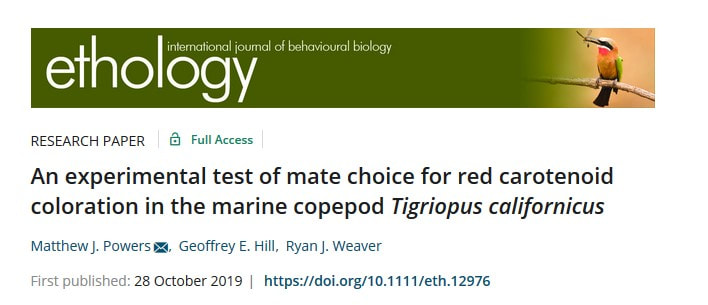|
Our latest paper on Tigriopus caroteniod coloration has been accepted at Ethology! These copepods are chock-full of red carotenoids, but some individuals are less colorful than others. Previously we've shown that carotenoids do provide protection against an oxidative challenge, most likely by functioning as an antioxidant. This led us to wonder if carotenoid coloration was under sexual selection via mate choice, as it is in birds and other vertebrates. Here is a link to the paper We found that after controlling for some confounding variables (sexual chemical cues on the surface of the exoskeleton), carotenoid coloration alone was not used as a criterion in mate choice.
As we dig deeper into the ways animals use carotenoids, it is clear that they are serving multiple roles that seem to be taxon specific. Some vertebrates have clearly co-opted carotenoids for colorful ornaments assessed during mate choice or intraspecific competition, while the relevant role for carotenoids as antioxidants appears to be limited, at least in birds. We and others have found the opposite in crustaceans. What remains to be discovered is how functional differences in carotenoid use among taxa are linked to differences in the genetics and biochemistry of carotenoid metabolism (e.g., uptake, bioconversion, cleavage).
1 Comment
1/27/2024 12:33:51 am
How do vertebrates and crustaceans differ in their utilization of carotenoids, specifically in terms of their roles in mate choice, intraspecific competition, and antioxidant functions? regard <a href="https://it.telkomuniversity.ac.id/">Telkom University</a>
Reply
Leave a Reply. |

 RSS Feed
RSS Feed
